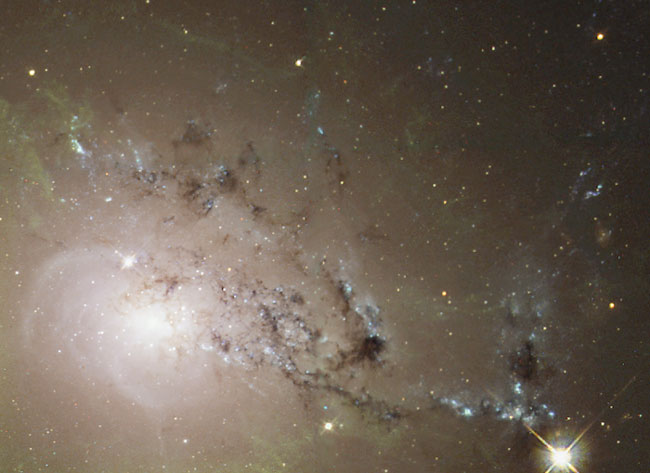Explanation: In NGC 1275, one galaxy is slicing through another. The disk of the dusty spiral galaxy near the image center is cutting through a large elliptical galaxy, visible predominantly on the lower left. Galaxies can change significantly during a collision like this, with gravitational tides distorting each galaxy and gas clouds being compressed and lighting up with new star formation. Galaxy collisions occur in slow motion to the human eye, with a single pass taking as much as 100 million years. NGC 1275 is a member of the Perseus cluster of galaxies that lies about 230 million light years away toward the constellation of Perseus. Each galaxy spans about 50,000 light years across. The above picture is a composite of images taken by the Hubble Space Telescope in 1995 and 2001.
1999 2000 2001 2002 2003 2004 2005 2006 2007 2008 2009 2010 2011 2012 2013 2014 2015 2016 2017 2018 2019 2020 2021 2022 2023 2024 2025 |
Yanvar' Fevral' Mart Aprel' Mai Iyun' Iyul' Avgust Sentyabr' Oktyabr' Noyabr' Dekabr' |
NASA Web Site Statements, Warnings, and Disclaimers
NASA Official: Jay Norris. Specific rights apply.
A service of: LHEA at NASA / GSFC
& Michigan Tech. U.
|
Publikacii s klyuchevymi slovami:
galactic collision - NGC 1275 - stalkivayushiesya galaktiki
Publikacii so slovami: galactic collision - NGC 1275 - stalkivayushiesya galaktiki | |
Sm. takzhe:
Vse publikacii na tu zhe temu >> | |
